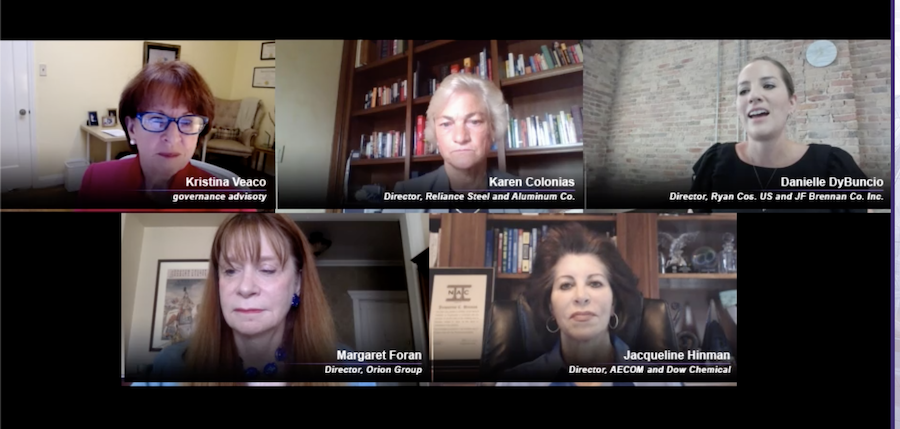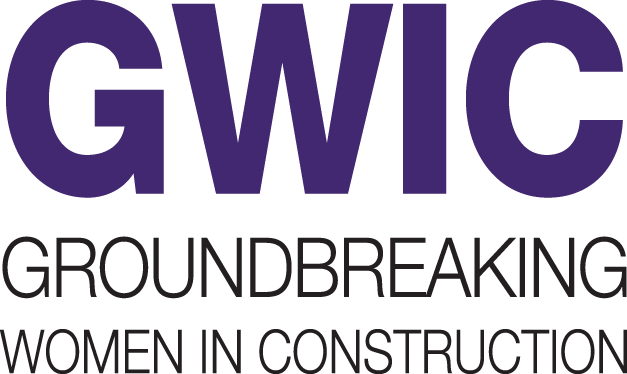Groundbreaking Women in Construction
Women Speak Out for Inclusion, Leadership, Diversity, Allyship

Women have made great strides in pursuing careers and leadership roles in construction, but there’s more that can be done to boost their numbers in the industry and ensure they maintain an even footing with male colleagues, according to presenters and attendees at the Groundbreaking Women in Construction conference, held Aug. 24-27.
Two senior leaders of Target Corp.’s construction program opened the conference, telling attendees that they are using size, scale and resources to advance social justice and racial equity both inside and outside of the retail giant. “We don't have all the answers nor have we asked all the right questions,” said Amber Koehler, senior director of construction. “What we do know is that we are in this together and that doing better is a priority.”
Stephen Makredes, vice president of construction at Target, set the drive for diversity against a backdrop of the firm's $7-billion program to “modernize every aspect of its business.” By the end of this year, the corporation will have remodeled more than 850 stores since the program launched in 2017 and engaged more than 500 architectural and engineering consultants, he said.
Makredes made his remarks to more than 1,000 registrants—a record for the key industry talent management and networking event that began in 2003 and is organized by ENR in partnership with construction law firm Peckar & Abramson.
“We know that we make the best decisions when we involve our communities, our teams and partners that represent those communities,” the retail executive said. That brought him to the idea: “What if our stores were built by those who shop in them?” That would mean 75% of the construction team would be women, he added, noting that they currently hold less than 10% of industry jobs.
In a drive to build more diverse teams, Target and other retail industry leaders supported formation of a workforce development company called ConstructReac to focus on creating opportunities through construction with a particular emphasis on women and other under-represented groups, Makredes said. The effort uses Target jobsites to introduce students, parents and school guidance counselors to the industry.
Seat at the Table
Koehler shared her personal journey as a woman in construction. “I have learned that my development requires a fleet of folks who are genuinely interested in giving me sound guidance. I have found it helpful to think of my supporters as my own personal board of directors,” she says. “You can create a board that works for you. I like to think of a board that has five key roles: a coach, a mentor, a sponsor, your leader and a reverse mentor.”
GWIC presenters also shared strategies for women seeking leadership through service on boards of directors, both in for-profit and non-profit organizations. Women can have an advantage as directors in a male-dominated industry because “we are different and have a better understanding of culture and leadership skills,” says Karen Colonias, CEO of industry supplier Simpson Strong-Tie, whose own board is 50% women. That is key for directors who are tasked with choosing a company’s next CEO and other top executives.
With evidence clear on bottom-line advantages, “gender diversity really matters” for industry firms and their clients, says Jacqueline Hinman, former chair of industry giant CH2M that now is part of Jacobs. Now serving on the boards of AECOM and of two major industrial corporations, she noted that because women's construction sector work experiences differ from those of male peers, women have expanded views of corporate performance and impact.
Hinman pointed out that boards need diverse perspectives based not only on a director’s personal characteristics, such as gender and race, but also on a levels of technology and business acumen. “All of those voices bring a total viewpoint,” Hinman said.
Danielle Dy Buncio, CEO of virtual design and construction technology firm VIATechnik, who also is director of two contractors, added that a board also must show its willingness to be inclusive, ensuring that all members are listening to diverse points of view and that those selected for corporate service, particularly women and people of color, “feel comfortable bringing forward their perspectives when there’s no overlap in the rest of the room.”
Experts also shared insights on strategies for women to gain equity in compensation and the value to themselves and their employers of being "fierce" negotiators.
A key conference focus was the need to boost employee engagement to keep female and male professionals from leaving the industry, with negative effect for company innovation, productivity and financials, according to noted organizational behavior researcher Romila Singh.
Other speakers addressed the concept of allyship—women assisting upward career movement for their peers.
“The process of becoming an ally does not happen overnight,” said Jessica Ostoyich, project executive for Mortenson. “It’s a journey. You have to listen, you have to put yourselves in their shoes.”
Ostoyich and Angie Simon, CEO of Western Allied Mechanical, said they advocate for other women in their organization, and make sure there are training opportunities for them. They also stressed the importance of eliminating gendered language, with Simon noting she’s on a mission to eliminate the term “manhours.”
Ostoyich said women have to be extra prepared to demonstrate on-the-job proficiency. “You have an opportunity to show these guys,” Simon said, “but you do need to work a little harder.”
Although Simon said she was initially resistant to join industry networking groups for women, she realized that there was value in having those connections outside of her own company.
“You have to pick your battles,” said Simon, “And you have to pick your timing.”
Diversity Spectrum
Presenters also explored how issues of unconscious bias can affect workplace interactions and even dissuade job candidates from considering offers.
Another group of women leaders examined how varied backgrounds—ethnic, racial, experiential, cultural or other—influence leadership and mentoring approaches.
LaToya Thompson, a fire sprinkler specialist for Hilti North America, said that as a Black woman on the jobsite, it can sometimes be a hurdle to earn the respect of workers from older generations. “My challenge is how do I contribute to their change management?” she said. One way is by reinforcing that she's among “the new faces of construction,” Thompson said
Thompson, also public relations director for Women in Construction Operations (WiOPS), said she often hears from people of color that it’s exhausting to have to “be the ones accountable” for propelling change and diversification in the industry. “But for someone like myself, I’m willing to bring it on and I’m willing to teach,” she added.
Jackie Richter, president of two specialty contracting firms, Heels and Hardhats and Endurance Utility Corp., both built from the ground up with diversity as a central component. was an early pioneer in getting certified as a trans woman-owned disadvantaged business enterprise by the Illinois Dept. of Transportation and U.S. DOT.
“We were the star pupils of diversity because we understood it. It was a culture that we built, how we hired people and who we bought from,” she said. “When we approach a new customer and talk about diversity, we all represent a part of the community that these businesses do business with.”
After building two successful companies, Richter is looking to pay it forward through mentoring not only other contractors, but clients as well, to help them develop better diversity programs. “My biggest reward is the legacy I leave when I’m done in this industry,” she said. “It’s the changes we have made to make someone else’s life better. We have to be driven and we have to take ownership in what we believe in to make that change.”
Menzer Pehlivan, a geotechnical engineer at Jacobs, advised that cultural differences should be considered when working in a diverse team.
“Culture has a significant influence on how it shapes the way we interact with each other and how we behave,” she said. “It goes from how you communicate with each other to how you form relations. If you aren’t really understanding these different layers of diversity, the way you start perceiving others can lead to significant miscommunications and misunderstandings.”
One conference attendee wrote in the virtual chat box that the panelists’ experiences and perspectives were “truly inspiring and definitely need to be shared.”
She added: “Thank you for reminding us that we are important contributors to the industry.”




